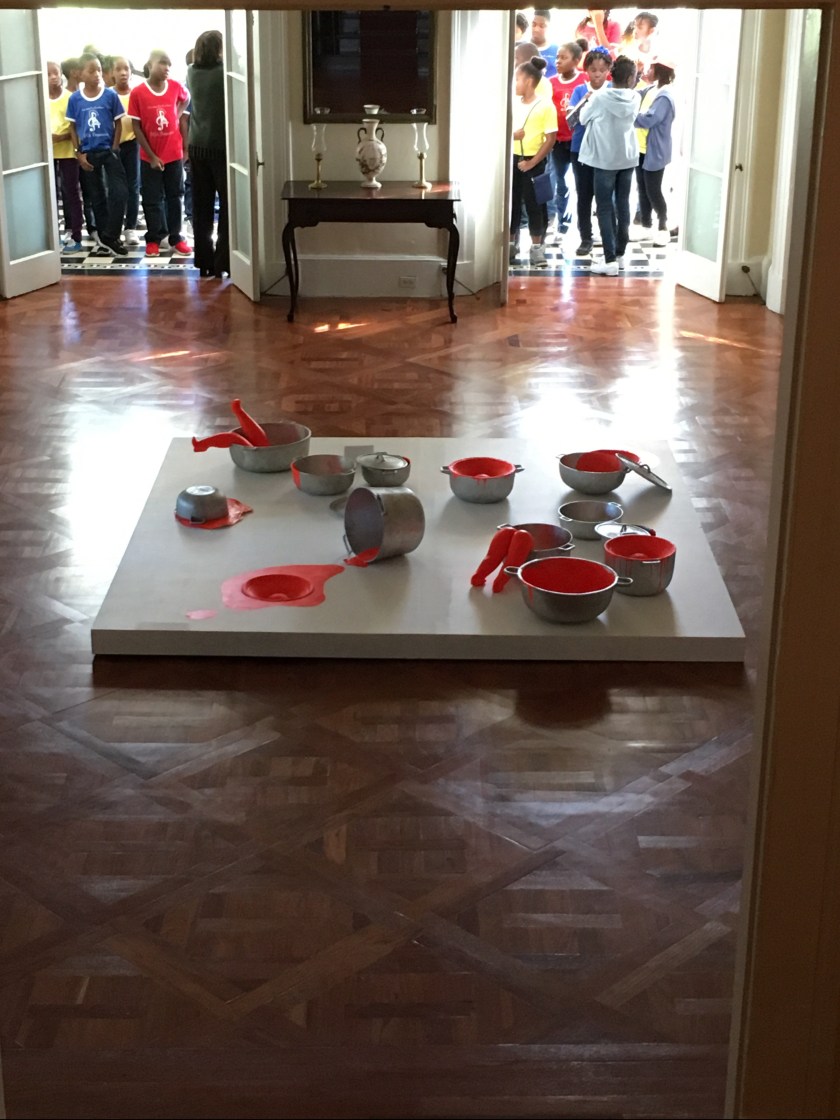

Culture–that overused and often abused word– is simply the panoply of distinctive features produced by the ‘livity’ of a people. Culture arises from the environments people live in, the resources at their disposal, the languages they speak, the way they prepare their food, the songs they sing, the clothes they wear, the things they read and watch, what they call art, how they do business, the games they play, the dance moves they make, how they build their physical and metaphorical homes. What they deem obscene and undesirable versus the obscene and undesirable things they tolerate everyday.
Culture cannot be mandated or legislated into existence. Nor can it be easily changed. Cultural change occurs at a glacial pace, primarily instigated by modification in environment, education and resources. The quickest way to transform cultures is by changing the living conditions of people but cultural adaptation is also influenced by exposure to new ways of seeing, doing and thinking.
Sometimes resources exist but are not fully utilized—or are used only by small segments of the population. How many Jamaicans visit the National Gallery of Jamaica for instance? Aside from the mandatory school trip how many people make a practice of visiting the Gallery regularly to view the exhibitions mounted there? Visual art is an aesthetic practice that has developed greatly beyond the basics of drawing, painting and sculpting what is visible to the eye yet too many of us don’t seem to realize this.
What does the mind see? How does it express it? How do we process history, location, time and identity to create new visual objects, sites and experiences? If you’re curious about such things this is the time to visit the National Gallery of Jamaica to see the 2017 Jamaica Biennial which opened on February 24 and will be up till May 28 this year. The National Gallery is an institution created as a repository for the visual musings of the nation, and should be patronized by all Jamaicans. Your taxes underwrite it.

The opening saw a record crowd filling the Gallery, the largest in memory, with families and children out in their numbers; one can only hope this trend continues. Leading up to the opening both the Gleaner and Observer carried bulletins about the Biennial and social media also did its bit to instigate the brimming support the Gallery received last Sunday. Perhaps nothing drummed up as much support for the Biennial as Laura Facey’s Ceiba, a 30-foot long cylindrical drum made from a fallen silk cotton tree (see photo above). Its installation at the Gallery, carried on the shoulders of 35 JDF soldiers, created a startling and colourful instagram moment that was widely featured across both traditional and social media.
The Biennial has spread outside the walls of the National Gallery itself, into Devon House and all the way to Montego Bay, where there is a spectacular display at National Gallery West by Martiniquan artist David Gumbs. The small but well-proportioned domed space of Gallery West has been transformed by five projection screens, one of them in the dome itself. Playing on the screens in psychedelic, patterned symmetry is self-generated, flower-inspired imagery, drenching the space in pure shape-shifting colour. The shape and size of the pulsating imagery depends on the length and strength of breath blown into a conch shell by visitors. The Dome projection is animated in realtime by the considerable street noise of Montego Bay. According to Gumbs, this work reflects on the need to breathe, the symmetric patterns referencing the lungs and the double sided aspect of things in life. Such as light and darkness. Or up and down. Balance.
For me Gumbs’ work symbolizes a shot in the arm of a city that has lost its balance: Montego Bay. Ravaged by the fallout from the vicious Lottery Scam that has embroiled too many citizens of Western Jamaica and Mobay in particular, what that part of the country needs is new life to be breathed into it. It needs a fresh pair of lungs, and Xing-Wang (which means ‘Blossoms’ in Chinese) by David Gumbs is that metaphoric, life-enabling apparatus. Go forth and breathe new life into your city Montegonians…
In Kingston the work of Jasmine Girvan casts a spell at Devon House with the intricately crafted historical horrors she has unleashed in that old building. For her outstanding contribution to the Jamaica Biennial 2017 she has rightfully won the Aaron Matalon Award for the second time. Girvan’s work gives you the unnerving feeling of walking into a spider’s web, leaving you uncomfortably aware of having been touched by something creepy while simultaneously feeling stunned by its sheer beauty. You have until May 28th to feast your eyes on this and other provocative work, and ponder the grotesque scaffolding Caribbean societies are built on.
Originally published in the Gleaner, March 1, 2017. Photos and video added.






